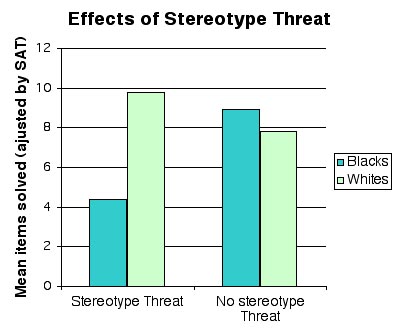Challenges to Living in a Multicultural World
Up to this point we have largely focused on many benefits of living in a multicultural world including the cognitive and psychological benefits of bilingualism, cultural frame switching and the regular use of code-switching in the age of social media. This section will focus on many some of the challenges that persist when living in a multicultural world.
Cultural Reaffirmation
Cultural reaffirmation is a phenomenon that occurs when multicultural individuals living in multicultural societies endorse even more traditional values than persons from the native country or monoculture individuals. There have been several instances observed in Western and Eastern cultures. For example, Kosmitzki (1996) examined monocultural and bicultural Germans and Americans who rated themselves, their cultural group and adopted cultural group. The bicultural individuals endorsed even more traits and values of the native culture than the monoculture individuals. Matsumoto, Weissman, Preston, Brown and Kupperbusch (1997) compared Japanese and Japanese Americans on ratings of interpersonal interactions and found that the Japanese Americans rated themselves higher in areas of collectivism than the Japanese nationals. Cultural reaffirmation has been explained by the stresses of immigrating or becoming part of a multicultural society. In other words, the immigrant group hangs tightly to the native culture even as the native culture changes, in this way the immigrant culture begins to conform to stereotypes.
Identity Denial
Identity denial occurs when individuals are not accepted as a member of the group that they identify with. To be clear, individuals are not denying their heritage, culture or experience but others who share their identity are rejecting them. Cheryan and Monin (2005) revealed that Asian Americans experience more identity denial than other ethnic groups in the United States. As a reaction to the denial, individuals will often over identify with American culture (e.g., football, music, television).

Stereotype Threat
As we learned earlier, stereotypes are generalized thoughts that influence our beliefs about others but also beliefs about ourselves and even our own performance on important tasks. In some cases, these beliefs may be positive, and have the effect of making us feel more confident and better able to perform tasks. On the other hand, sometimes these beliefs are negative, and they have the effect of making us perform more poorly just because of our knowledge about the stereotypes.
One of the long-standing puzzles in the area of academic performance concerns why African American students in the United States perform more poorly on standardized tests, receive lower grades, and are less likely to remain in school in comparison with White students, even when other factors such as family income, parents’ education, and other relevant variables are controlled. Steele and Aronson (1995) tested the hypothesis that these differences might be due to the activation of negative stereotypes. They hypothesized that African American students are aware of the inaccurate stereotype that ‘African American students are intellectually inferior to White students,’ and this stereotype creates a negative expectation. This negative expectation then interferes with students’ performance on intellectual and academic tests through fear of confirming that stereotype.
Results confirmed that African American college students performed worse, in comparison with their prior test scores, on math questions taken from the Graduate Record Examination (GRE) when the test was described to them as a diagnostic measure of their mathematical abilities (and thus when the stereotype was relevant) but performance was not influenced when the same questions were framed as a problem-solving activity.

In another study, Steele and Aronson found that when African American students were asked to indicate their race before they took a math test (a way to activating the stereotype), they performed more poorly than they had on prior exams, whereas the scores of White students were not affected by first indicating their race. Steele and Aronson argued that thinking about negative stereotypes that are relevant to the task that you are performing creates stereotype threat, which leads to decreased performance. That is, the negative impact of race on standardized tests may be caused, at least in part, by the performance situation itself. When the threat was present, African American students were negatively influenced by it.
Research has found that the experience of stereotype threat can help explain a wide variety of performance declines among those who are targeted by negative stereotypes. For instance, when a math task is described as diagnostic of intelligence, Latinos and particularly Latinas perform more poorly than do Whites (Gonzales, Blanton, & Williams, 2002). Similarly, when stereotypes are activated, children with low socioeconomic status perform more poorly in math than do those with high socioeconomic status, and psychology students perform more poorly than do natural science students (Brown, Croizet, Bohner, Fournet, & Payne, 2003). Even groups who typically enjoy advantaged social status can be made to experience stereotype threat. White men performed more poorly on a math test when they were told that their performance would be compared with that of Asian men (Aronson, Lustina, Good, Keough, & Steele, 1999), and Whites students performed more poorly than African American students on a sport-related task when it was described to them as measuring their natural athletic ability (Stone, 2002).
Stereotype threat is created in situations that pose a significant threat to self-concern, such that our perceptions of ourselves as important, valuable, and capable individuals are threatened. In these situations, there is a discrepancy between our positive concept of our skills and abilities and the negative stereotypes suggesting poor performance. When our stereotypes lead us to be believe that we are likely to perform poorly on a task, we experience a feeling of unease and status threat. Stereotype threat is not, however, absolute and manipulations that affirm positive characteristics about oneself or one’s group are successful at reducing stereotype threat (Alter, Aronson, Darley, Rodriguez, & Ruble, 2010; Greenberg et al., 2003; McIntyre, Paulson, & Lord, 2003). In fact, just knowing that stereotype threat exists may influence performance and possibly alleviate its negative impact (Johns, Schmader, & Martens, 2005).
Contact Hypothesis
We learned earlier that one of the reasons that people may hold stereotypes and prejudices is that they view the members of outgroups as different from them. Sometime we fear that our interactions with people from different racial groups will be unpleasant, and these anxieties may lead us to avoid interacting with people from those groups (Mallett, Wilson, & Gilbert, 2008). This suggests that a good way to reduce prejudice is to help people create closer connections with members of different groups. People will behave more favorable toward others when they learn to see other people as more similar to them, as closer to the self, and to be more concerned about them. This idea is known as the contact hypothesis.
Pettigrew and Tropp (2006) conducted a meta-analysis in which they reviewed over 500 studies that had investigated the effects of intergroup contact on group attitudes. They found that attitudes toward groups that were in contact became more positive over time. Furthermore, positive effects of contact were found on both stereotypes and prejudice and for many different types of contacted groups. The positive effects of intergroup contact may be due in part to increases in concern for others. Galinsky and Moskowitz (2000) found that leading students to take the perspective of another group member, which increased empathy and closeness to the person, also reduced prejudice.

Student behavior on campuses demonstrates the importance of connecting with others and the dangers of not doing so. Sidanius, Van Laar, Levin, and Sinclair (2004) found that students who joined exclusive campus groups, including fraternities, sororities, and minority ethnic organizations, were more prejudiced to begin with and became even less connected and more intolerant of members of other social groups over the time that they remained in the organizations. One explanation is that memberships in these groups focused the students on themselves and other people who were very similar to them, leading them to become less tolerant of others who were different.
One large scale intergroup contact example came about as a result of the United States (U.S.) Supreme Court case Brown v. Board of Education in 1954 which overturned an earlier court ruling and declared state laws establishing separate public schools for African American and White students to be unconstitutional. As a result, schools had to be integrated, which caused severe political unrest in many states, but particularly in the Southern United States. Integrating schools had a profound impact on the racial composition of classrooms, improved educational and occupational achievement of African American students and increased the desire of African American students to interact with Whites by forming cross-race friendships (Stephan, 1999). Overall, desegregating schools in the United States supports the expectation that intergroup contact, at least in the long run, can be successful in changing attitudes. There is substantial support for the effectiveness of intergroup contact in improving group attitudes in a wide variety of situations, including schools, work organizations, military forces, and public housing.
Although intergroup contact does work, it is not always a cure because the conditions necessary for it to be successful are frequently not met. Contact can be expected to work only in situations that create the appropriate opportunities for change. For one, contact will only be effective if it provides information demonstrating that the existing stereotypes held by the individuals are incorrect. When we learn more about groups that we didn’t know much about before, we learn more of the truth about them, leading us to be less biased in our beliefs; however, if our interactions with the group members do not allow us to learn new beliefs, then contact cannot work.
When we first meet someone from another category, we are likely to rely almost exclusively on our stereotypes (Brodt & Ross, 1998) but when we get to know the individual well (e.g., as a student in a classroom gets to know other students over a school year), we may get to the point where we ignore that individual’s group membership almost completely, responding to him or her entirely at the individual level (Madon et al., 1998). In this way contact is effective in part because it leads us to get past our perceptions of others as group members and to see them as people.

